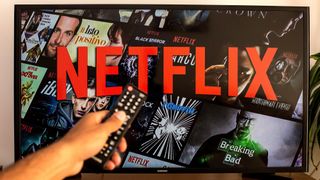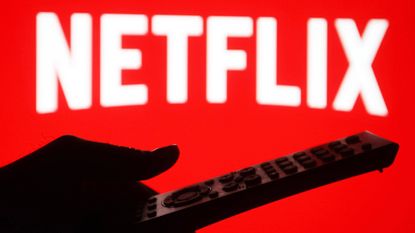I, like I am sure many others have, have been following the gradual emergence of the fact that popular streaming service Netflix is planning to introduce an advert-supported subscription tier later in 2022.
Indeed, T3 has been at the forefront of reporting on the development ever since Netflix's co-CEO Reed Hastings first raised the possibility back in April this year.
Now it appears those plans have come to fruition, with Netflix's other co-CEO, Ted Sarandos, recently confirming that adverts are coming to the streaming service.
And, well, the fallout of this announcement has been quite spectacular. After reading some commentary on the introduction of an ad-supported Netflix tier from critics you'd think the world was ending, or that we're all about to be kicked out of the streaming Garden of Eden.
But, actually, I disagree with much of that presentation of the move. Here's why.

Where I agree that Netflix introducing adverts is a historic change is in that, yes, it was the first ad-free à la carte streaming service and today, just about still, it is the most popular world wide. So the fact that this grandfather of streaming is suddenly introducing adverts and shifting its business model feels like a marked shift, and one that I feel is prophetic to future moves by other streaming services.
But I think that is about where my sense of a biblical shift ends.
Netflix, for many years, I think it fair to say, felt almost too good to be true. The movies and TV show library the service offered was always immense and best in class, and was offered at a price that was incredible value for money.
Many people I talk to now remember these days and refer to them very much like a streaming paradise. But in my mind it's not the introduction of adverts that's lead to the collapse of this streaming nirvana, but simply the inevitable introduction of competition.
Because the truth is that, just like in all new emerging markets, competition has rapidly arrived over the last decade and that has seen Netflix lose a lot of its content and face much more competition for the public's subscription money.
Unlike in the late 2000s, now people don't just have Netflix to choose from, but also Amazon Prime Video, Disney+, Paramount+, Apple TV+, Hulu, HBO Max and many more streaming services, too.

And the point is that, as I recently wrote, this means that not only is content split across more streaming services than ever before, but that most people simply can't afford to subscribe to them all, too, which means they will miss out on content.
For me, adverts coming to streaming services isn't the paradise lost moment, as I feel we're already living in those times already. I can't afford to watch all the content I want to anymore on streaming services, and I'm sure that's the case for millions of people, too. That truly feels like streaming paradise lost to me.
So, what's the real-world solution to that? T3 has written before that we feel now, more than ever, the way for people to get the most streaming service bang for their buck is to constantly evaluate which services you pay for, tier them in terms of importance, and actively cancel any that you feel you've drained of content at that time. This will save you money or, crucially, free up money to push into another service at that time.
Remember, you can always re-subscribe to them in a few months or a year and catch up on any new content.
But this is where I see cheaper ad-supported subscription tiers at streaming services like Netflix as a good thing – they're going to make it easier to keep access to more content without outright cancellations, and also directly allow you to adjust the amount you pay for something based on the value you're getting out it at that specific time.
For example, right now (although this might change at any time, with me constantly re-evaluating which service delivers me most entertainment) Disney Plus is the streaming service that I simply couldn't do without. I'm a family man and Disney Plus' library has so much family content it makes sense to keep it.

But I've been seriously considering cancelling Netflix due to the cost of living crisis and the fact that I like the idea of watching content on other services, such as Apple TV+. Netflix is the most expensive streaming service I subscribe to, so it makes sense to consider it for the chop, especially as the amount of movies and shows I watch on it has dropped off over the past year.
But if Netflix offers me a cheaper advert-supported tier, then it will make it easier for me to keep watching Netflix shows. That means in times where I'm watching Netflix less I can pay less, downgrading my subscription tier. Adverts aren't great by any means, but I can stomach them if it means that I get to keep watching content and keep my bank balance healthy.
Of course, this new advert supported tier's appeal to me does though rest on one very important thing – how much is it going to cost? And, for me, who is a subscriber to Netflix's most expensive 4K HDR streaming tier, will it be compatible with my tech needs? Will I be as happy to downgrade my visual experience and experience adverts to pay less for Netflix? Right now I'm unsure as I don't know the cost, but as I own an 4K HDR LG C1 OLED TV, probably not unless the price is really attractive.
But, in principle, I just don't see how streaming services offering ad-supported tiers is a bad thing. Not to sound too much like Agent Smith in The Matrix, but it was inevitable, following the same pattern as cable TV transitioning from no adverts to adverts. The difference here though is that the ad-free version isn't going away.
At the end of the day I'll pay to remove adverts on a service that I rate highly or make use of frequently. And, if I don't, then I'll consider an ad-supported tier or a cancellation going forward, it really is that simple. And isn't that new level of choice a good thing?











